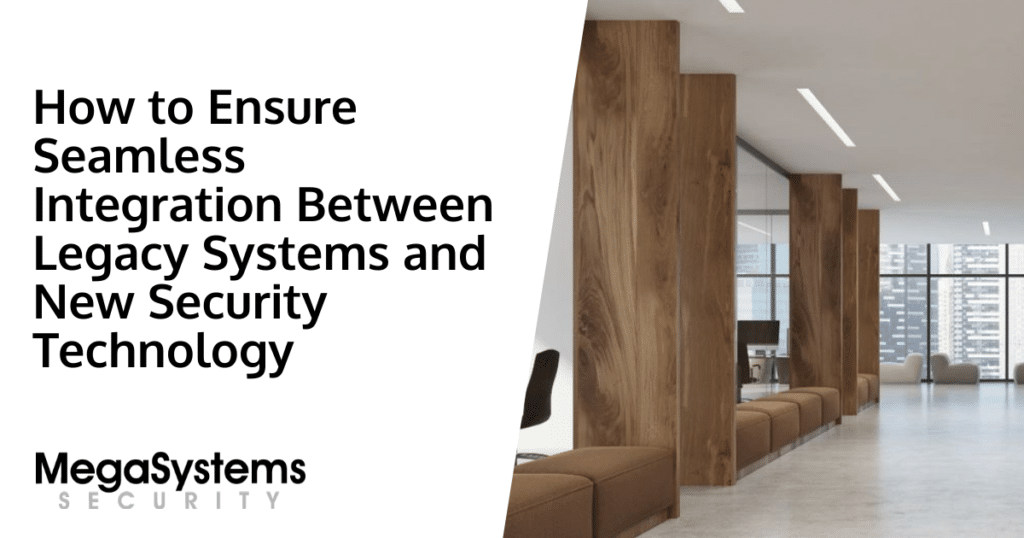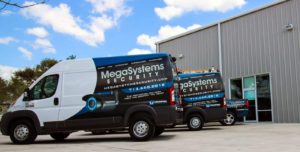Introduction
The integration of legacy systems with new security technology has become a crucial initiative for many businesses, especially those operating in bustling commercial hubs such as Houston. As companies look for ways to upgrade their security and surveillance while still honoring previous investments, technical experts and decision-makers are exploring methods to achieve seamless integration. This article will outline how to effectively integrate legacy systems with modern security products, discussing each element in detail. Every aspect—from the installation process to evaluating the features and benefits of the integrated solutions—is covered to ensure a complete understanding, whether you are a seasoned professional or a newcomer to the field. Over the course of this discussion, we will delve into the functionality of various components such as a camera and other elements, and how these contribute to building robust security systems.
Understanding Legacy Systems and New Security Technology
Legacy systems often represent a long-standing investment in the infrastructure of a business. These systems can include everything from dated analog cameras for surveillance to older security control panels. They were once cutting-edge technology, but as new security products and smart integrations emerge, industries are finding that upgrading does not always necessitate the complete discard of earlier systems. Instead, there is an increasing focus on harmonizing the robust features of legacy systems with modern digital enhancements.
Components and Features of Legacy Systems
Legacy systems typically include hardware that has served reliably over many years. For example, older camera models that have been installed in commercial buildings continue to provide visual surveillance, and while they may lack the high-definition capabilities of today’s equipment, their proven track record and reliability have cemented their position in the security ecosystem. In-depth maintenance records, consistent update procedures during their active use period, and a high level of operational dependability are among their chief benefits. However, these systems might have limitations when it comes to scalability, interoperability with modern platforms, or remote accessibility.
Modern Security Technology and Its Benefits
Modern security products often focus on digital connectivity, advanced analytics capabilities, and remote monitoring. These often include network-enabled cameras that provide higher resolution, improved data storage, and intelligent features such as motion detection and facial recognition. New security systems utilize the latest technologies in processing power and connectivity, making them a natural choice for enhancing the surveillance capabilities of institutions. Innovations such as cloud-based data management, real-time alerts, and integration with mobile platforms help business owners stay informed and react promptly to potential security breaches. The installation process for these advanced systems might involve connecting hardware components in strategic positions and ensuring that digital communication channels are secure and stable.
Importance of Integration for Enhanced Security and Surveillance
One of the most significant goals of integrating legacy systems with new security technology is to create a unified, comprehensive security strategy. This convergence not only helps in maintaining full operational control over existing investments but also leverages contemporary technology to improve overall system reliability, sensitivity, and accuracy. Integration efforts focus on achieving compatibility between devices manufactured years apart, enabling real-time data exchange and analytics, and ultimately providing a seamless experience in surveillance tasks. In commercial areas, particularly within densely populated places like Houston, this integration significantly enhances both proactive security measures and emergency responses.
Benefits of Seamless Integration
Combining legacy systems with modern digital solutions can lead to numerous benefits. Alongside improved surveillance and security, such integration also supports a streamlined installation that minimizes disruptions during the transition phase. For instance, businesses in tx areas or major urban settings benefit from enhanced interoperability, which allows older cameras to function alongside state-of-the-art digital recorders and analytics platforms. Clients enjoy the best of both worlds—the operational reliability of legacy technology paired with the innovative capabilities of modern systems such as high-definition images, remote accessibility, and predictive analytics. Additionally, the integration process can also result in cost savings by utilizing existing hardware while only upgrading the necessary components.
Challenges in Integrating Legacy and Modern Systems
Despite the apparent benefits, integration does come with its unique set of challenges. One common challenge is ensuring that the older hardware components, often designed for different operating standards, can communicate effectively with the new digital elements. This means that specialized interfaces or middleware solutions might be required. There is also the necessity for careful attention during each installation phase—particularly when linking components such as cameras in separate security systems—to assure that the data integrity from the legacy equipment is maintained. Moreover, ensuring that all systems meet current regulatory standards for commercial and security surveillance is a major consideration, especially in regions like Houston where there is a strong expectation for both technological innovation and stringent safety regulations.
Strategies for Effective Integration
Achieving efficient integration between legacy systems and new security technology demands a well-thought-out strategy that considers all key elements. This includes careful planning, a detailed assessment of current infrastructure, and selecting the appropriate hardware and software interfaces. Understanding existing systems is the first step; stakeholders should meticulously catalog each piece of equipment, its functionality, and any limitations it may hold. This initial assessment will inform decisions regarding system upgrades or necessary retrofits.
Planning and Assessment
Before initiating any work, evaluate the different components that are part of the legacy systems. Consider every aspect—from the age and condition of the hardware, such as analog cameras, to the existing wiring and connectivity protocols. Detailed planning involves weighing the costs and benefits of upgrading versus replacing components. Evaluate the effectiveness of older systems in meeting contemporary challenges, such as integrating with digital communication platforms. Resources needed for a seamless integration should include detailed technical documentation, consultation with industry experts, and an understanding of how different systems can work together.
Implementation: Installation Process
The installation process of integrating legacy systems with modern equipment can vary depending on the scope and complexity. One key area is ensuring that physical installations such as cameras—both old and new—are positioned optimally for effective surveillance. A successful installation in a commercial setting requires a careful study of environmental factors such as light, temperature, and access points. Furthermore, installation in places like tx regions demands specific considerations for weather-resistant hardware. During the process, technicians must follow best practices, which include synchronizing the settings between older systems and newer networks, ensuring compatibility through bridges or adapters, and rigorously testing the integrated network to guarantee consistent performance.
Techniques for Achieving Interoperability
Interoperability between legacy systems and modern digital hardware is achieved by establishing communication protocols that are mutually understood by all devices. For many installations, this involves software updates or installing middleware that supports various communication standards. Resources such as technical documentation, case studies of similar integration projects, and expert consultations can guide businesses in addressing potential pitfalls. For example, a commercial system might use a dedicated interface to convert analog signals from older cameras into a digital format readable by contemporary monitoring systems. This approach not only bridges the communication gap but also paves the way for robust data aggregation and analytical processes.
Practical Tips for Integration Success
Successfully integrating legacy systems with new security technology requires a combination of technical know-how, strategic planning, and attention to detail. Some practical tips include performing thorough assessments of current installations, scheduling downtime to avoid disrupting operational processes during installation, and ensuring that there is adequate training for staff managing the new system capabilities. Businesses should also invest in support and maintenance services from reputable vendors, particularly when working on commercial breakthroughs. This can be significant in both residential and large-scale institutional settings.
Overcoming Compatibility Issues
Compatibility issues are frequently encountered when dealing with different generations of technology. It is crucial to identify potential mismatches early in the planning phase. Ensure that each system’s communication and data protocols can align, sometimes by enabling translation devices or adapters specifically designed to bridge older analog inputs with contemporary digital networks. Familiarize yourself with features in each component so that you can understand where an upgrade might be necessary without compromising the overall reliability of your infrastructure. This approach often involves collaborative efforts between manufacturers and specialized integration professionals who can pinpoint critical points of failure and provide suitable solutions.
Future-Proofing Your Integration
When planning for the integration between legacy and new systems, it is essential to consider strategies that will allow for continual technological improvements. Future-proofing involves selecting components and design structures that can accommodate further upgrades in security and surveillance. By integrating scalable middleware and open standards in network communications, businesses can ensure that their systems remain relevant even as technological requirements evolve. This principle not only supports operational efficiency but also helps to mitigate the risks associated with security breaches, as modern systems are often designed with advanced encryption and real-time threat detection mechanisms.
Balancing DIY Efforts with Professional Expertise
The debate between do-it-yourself approaches and professional installation is particularly relevant in the context of integrating legacy systems with new security technology. While some businesses may possess the technical expertise to handle portions of the integration on their own, the complexity of modern security systems often necessitates the guidance of experienced professionals. A DIY approach might be suitable for small-scale projects or simple integrations; however, larger installations, especially those involving multiple layers of surveillance and commercial premises, may benefit significantly from professional oversight. This dual strategy allows for a balanced approach where initial planning might be established internally, while final integration and testing stages are handled by experts who ensure all components interact seamlessly.
The Role of Professional Services
Professional installation services offer the combined experience of long-standing history in the field, expertise in troubleshooting, and an understanding of both legacy and emerging technologies in security. Professionals bring with them a wealth of resources that can be invaluable, including access to proprietary integration software, detailed device manuals, and advanced training in the latest technologies. They also ensure that every element—from the legacy camera installations to the new digital interfaces—is correctly calibrated and secured. In cities like Houston, where commercial security standards are exceptionally high due to dense populations and complex urban layouts, professional installation can mean the difference between an effective system and one that fails under pressure.
Conclusion
The integration of legacy systems with new security technology represents a critical junction in the evolution of commercial surveillance and overall security infrastructure. The process involves careful planning, thorough evaluation, seamless installation, and an ongoing commitment to maintaining both the legacy reliability and the modern efficiency expected from contemporary surveillance networks. Whether you are managing the security of facilities in Houston, overseeing operations in tx regions, or simply striving to modernize existing systems, understanding the detailed interplay between proven legacy systems and innovative digital enhancements is essential. With careful strategy, professional guidance, and an emphasis on balanced integration, businesses can achieve secure, reliable, and future-proof surveillance and security systems that stand up to modern challenges while respecting past investments.


